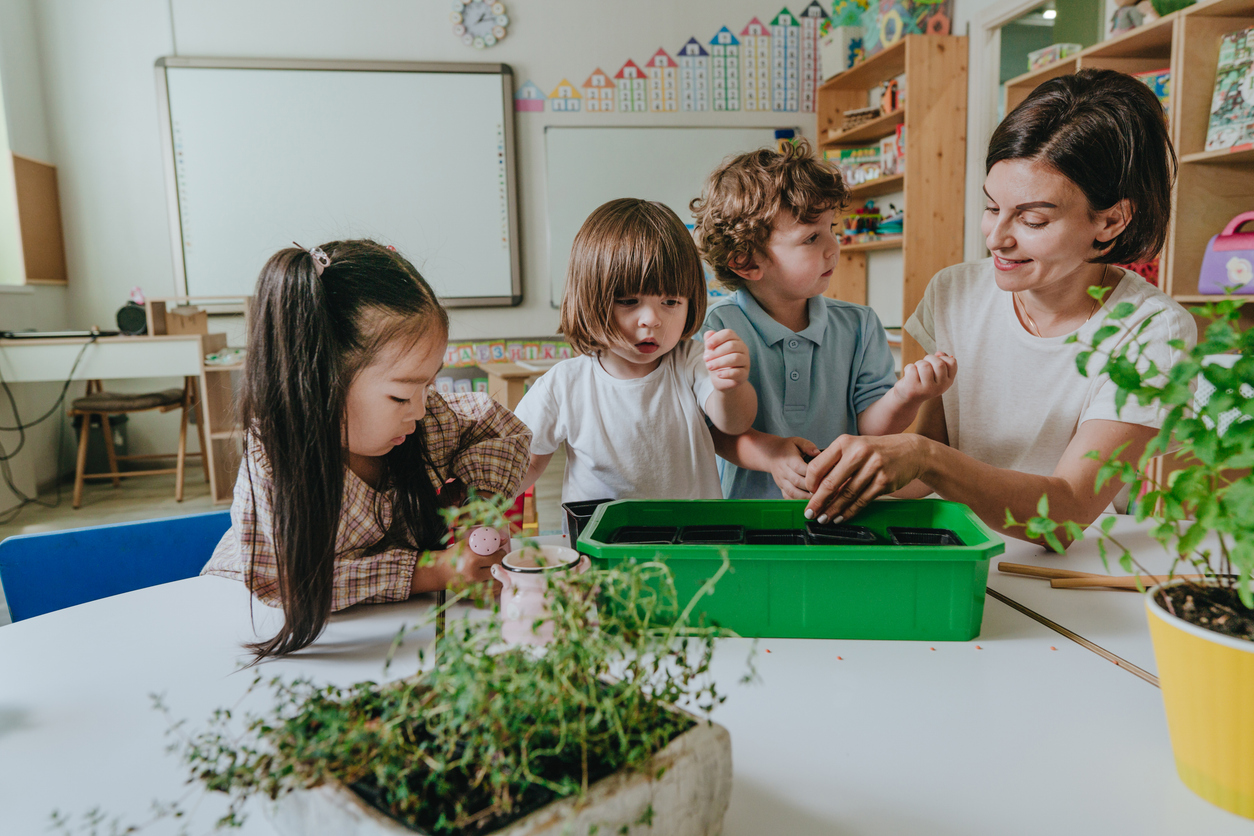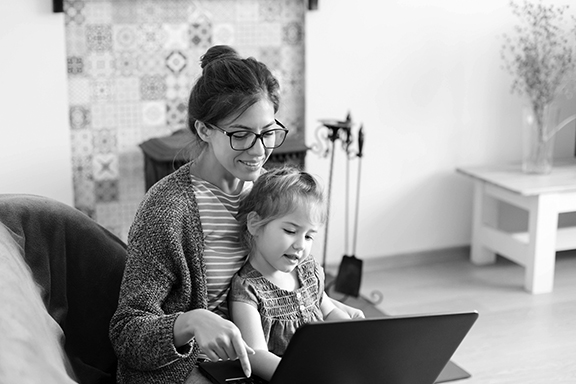Social Skills: How to Detect Gaps and Build Proficiency in Children of All Ages
Moving from Social Distancing to Social-Emotional Learning
As parents, we helped our children with remote learning, remote homework, and remote playdates during the pandemic. We’ve been doing our best to ensure that our kids don’t fall behind after the “lost year.” And there is an assumption that, with schools re-opening and a Covid vaccine available, kids will seamlessly re-engage with their peers and the world around them. For many kids, though, a sizable social shift has occurred.
As our children re-establish their routines, they must learn to hurdle gaps in social and emotional skills. Yet many parents don’t know how to identify these gaps, or how to help if needed. If our child or teen struggles to make conversation, doesn’t choose to interact with friends, seems immature, stomps around the house sullen, or spends all day on video games rather than homework, we wonder, “Is this the new normal?”
Peers Influence How We Interact Socially
Think back to your own childhood—when you played neighborhood kickball with friends, joined a student group as a teen, or introduced yourself to roommates at college. Whatever the interaction, it took practice and was guided by experience gained through prior in-person interactions. The give-and-take, back-and-forth nature of being with others allows children and teens to mirror peers, adapt, engage, and test out their social approach.
Peers provide social cues and feedback, which teach children how to understand unspoken social rules and interpret which behaviors help them fit into a group. Kids then learn how to cooperate, negotiate, cope with disappointments, and adapt to continue play. This social development process is very interactive.
Social-emotional and behavioral skill development begins when we are babies and continues to grow and build as we age. Child development experts detail the various milestones that kids can be expected to reach at roughly the same age. (Visit Understood.org for a list of social and emotional milestones at different ages.) Characteristics of social-emotional and behavioral maturity include taking responsibility for actions, evaluating risks and opportunities, managing emotions, meeting social rules and demands of a situation appropriately, and controlling impulses. Kids reach milestones at different rates, but when children do not have skills in line with their same-aged peers, then they may need support and direct instruction to help them reach those milestones. This does not mean telling them to do better. It means helping them to learn key social-emotional skills so they understand how to interpret the social world.
Is This the “New Normal?”
A year-plus of social distancing has left children without much of the practice, play, and interactions that are key to developing social intelligence. Now, parents may be wondering if online interaction only is the new normal. The pandemic has wreaked havoc on opportunities for play and interactions, and children have grown accustomed to relying on electronics and video games to connect. As most children are returning to in-person school, parents need to help their children find a new balance between the digital and non-digital worlds.
Everyone’s social skills have become rusty, but children’s have been particularly affected. After over a year of playing and interacting perhaps only with adults and siblings, many children and teens must now re-learn the art of effectively communicating with their peers. And like everything else, some children will relearn these social-emotional and behavioral skills easily, while others will need direct instruction—over and over again—in order to master them.
How to Detect If Your Child or Teen May Have a Social Skills Gap
If your child or teen had struggled with social anxiety or social inclusion before, the past year may have deepened these concerns. To ascertain whether your child is going through a developmental stage or is isolated because they have ill-adaptive social strategies, start by observing them in play or in a social situation. Can they make new friends? Can they adapt to different people and situations? Are they able to reach out and join a group in an age-appropriate way?
Whatever your child’s age, consider if they are able to understand the expectations of their peers and if they have the skills to play, hang out and make friends. As long as a child understands the expectations of their peers and can adapt, they should not be isolated from others due to a stage or immaturity. In most cases, even if the root of isolation is immaturity or developmental stages, kids may need some coaching from you and some practice working on social skills.
We All Need Help Sometimes
If you sense that your child is having trouble, don’t try to pressure them to adapt socially. Cajoling a child without social skills to become a better playmate is as effective as pressuring a child who never learned to swim to race across a lake. Adding pressure only triggers more stress, which in turn triggers the brain’s fight-flight-or-freeze survival reflex—not a productive mindset for a social setting.
Seven Skills Everyone Needs to Be Socially Successful
Like all of us, children need to be able to cope with pressures, situations, and all types of people in order to get along in the world. Every child wants to succeed and to develop the mastery to be a capable human being. To do that, they must learn to work with their own unique brain wiring—they must learn to figure out what’s holding them back and then how to do something about it.
Below are just some of the important social abilities everyone—adults included—need for better success in relationships and school or the workplace. These are covered in the scripts, tools, and actionable exercises from my book, Why Will No One Play with Me?
Manage emotions: Help your child recognize the body signals associated with “big emotions.” Disappointment is tough for all of us, but without coping techniques, it is far too easy to become overwhelmed. Rarely does overwhelm translate into a good communication style.
Read the room: When we don’t pause and evaluate our surroundings and the prevailing vibe or emotional tone of those present, we run the risk of annoying others. Work with your child by asking, “Is there an activity or conversation under way? Are there expectations of your role and how you should join in? Is the dialogue free-flowing— allowing for a casual and spontaneous collaboration—or structured?” Work with your child to recognize what they might need to do to adjust their energy, level, tone, or expectations to match the setting. Practice guessing how others might expect them to behave in this setting.
Meet people halfway: This may be one of the harder things for a child to learn. Introducing themselves, starting a conversation, or answering a question when asked can be painful for a shy or anxious child. Even just a smile and friendly acknowledgment can be enough to signal to another person that you’re sociable and open for conversation. Sometimes halfway means physically stepping forward rather than hanging back or not showing at all.
Adapt to social cues and unspoken rules: Verbal cues might seem easy, but they require that one pays attention to what others are saying and doing. This can be challenging if your child routinely tune outs others and prefer to stay tuned into their own thoughts.
Walk in someone else’s shoes: To see things through another’s eyes and to understand someone else’s perspective, your child will need to interpret others’ motives and reactions. This includes your child understanding how the other person is reacting to them. Help your child understand that every behavior and every action makes an impression on others, and they operate and react to you based on those impressions.
Be flexible and adaptive: A child needs to accept that they can’t always be right. Compromise is an essential social role and they need to recognize that at times it’s best to place a friendship or the larger group’s interest ahead of being right. Argumentative, “Rule Police” kids struggle with knowing when to drop the debate and accept no for an answer.
Know your audience: For a 5-year-old, this means recognizing and filtering what is meant for public or private ears. Work with your child to recognize that insulting teachers and friends by saying thoughtless things can hurt feelings and ruffle feathers. Impulsive declarations, such as “Your dress makes you look fat,” or “My mom says you are lazy,” can have long-lasting, negative consequences. A 10-year-old must learn to anticipate and predict what friends find interesting and what they like to talk about. Learning to adapt tone, stories, and content depending on the age and interests of those around you is an important life skill.
Meet Children Where They Are
Whatever a child’s story, our job as parents is to prepare them to survive and thrive throughout their lifetime. Left unaddressed, social skills problems can travel into adolescence when they predictably worsen—and then into adulthood. The lack of people skills not only isolates us socially, but also keeps us from getting or changing jobs, advocating for promotions, or pursuing dreams.
Now is the time to start. Like tying shoes or learning to read, eventually they’ll forget what it took to learn these skills because it becomes second nature. Coaching conversations, skill-building lessons, practice, and problem-solving strategies are going to give your child the skills and confidence needed to change behavior.
Think of children as eager learners whose skills aren’t fully developed yet. Remember, behavioral change takes time. The steps you take today will help your child build a lifetime of joy and connectedness.
Works Cited
Brown, Stuart. Play: How It Shapes the Brain, Opens the Imagination, and Invigorates the Soul. Avery Publishing, 2009.
Bukatko, Danuta, and Marvin W. Daehler. Child Development: A Thematic Approach. 2nd ed., Houghton Mifflin Harcourt, 2017.
Delahooke, Mona. Social and Emotional Development in Early Intervention: A Skills Guide for Working with Children. PESI Publishing, 2017.
Ferguson, Christopher J., et al. “A Meta-Analysis of Pathological Gaming Prevalence and Comorbidity with Mental Health, Academic and Social Problems.” Journal of Psychiatric Research, vol. 42, 2011, pp. 1573–1758, https://christopherjferguson.com/Video%20Game%20Addiction.pdf
Frost, Joe L., et al. Play and Child Development. 3rd ed. Merrill Education//Prentice Hall, 2008.
Ginsburg, Kenneth R. “The Importance of Play in Promoting Healthy Child Development and Maintaining Strong Parent-Child Bonds.” Pediatrics, vol. 119, no. 1, 1 Jan. 2007, pp. 182–191, https://doi.org/10.1542/peds.2006-2697.
Morin, Amanda. “Social and Emotional Skills at Different Ages.” Understood.org, https://www.understood.org/articles/en/social-and-emotional-skills-what-to-expect-at-different-ages.
“New Recommendations for Children’s Media Use.” American Academy of Pediatrics, https://www.aap.org/en/patient-care/media-and-children/.
Przybylski, Andrew K., and Netta Weinstein. “A Large-Scale Test of the Goldilocks Hypothesis: Quantifying the Relations Between Digital-Screen Use and the Mental Well-Being of Adolescents.” Psychological Science, vol. 28, no. 2, 13 Jan. 2017, pp. 204–215, https://doi.org/10.1177/0956797616678438.
Caroline Maguire, M.Ed., ACCG, PCC, is the founder of a social emotional learning methodology. She is the author of Why Will No One Play With Me?: The Play Better Plan to Help Children of All Ages Make Friends and Thrive. She is also a co-collaborator on HowToSel.com, a daily social emotional learning platform. Follow her on Twitter @AuthorCarolineM.
This article first appeared in the 2022 issue of the Parents League Review. Get the current issue of the Review free with a family membership. Or purchase it separately.












